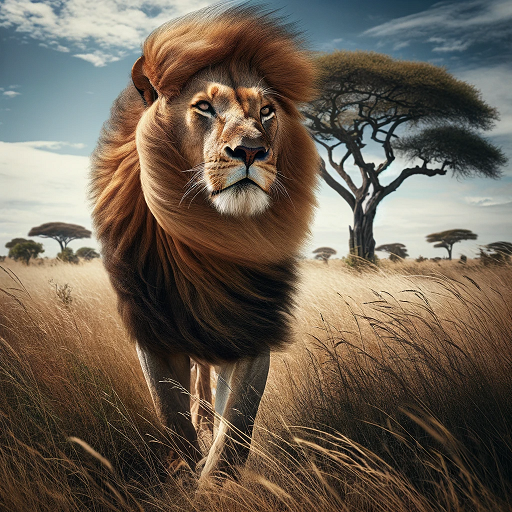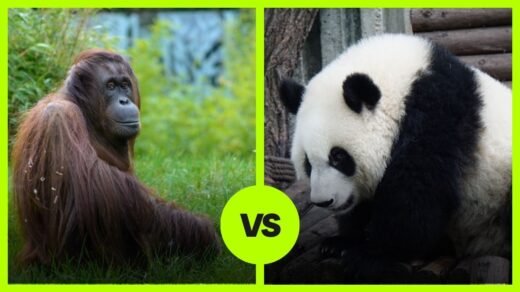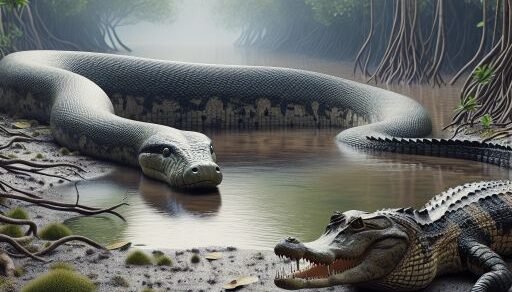Polar Bear vs. Lion: Who Would Win?
The animal kingdom is filled with formidable predators, each adapted to their unique environments. Among the most awe-inspiring are the polar bear, the largest land carnivore, and the lion, often dubbed the “King of the Jungle.” A hypothetical battle between these two apex predators stirs the imagination, as it pits the brute strength and endurance of the Arctic giant against the agility and cooperative hunting strategies of the savannah’s ruler.
Polar Bear: The Arctic Colossus
Strength and Physicality
Polar bears, standing as the titans of the Arctic, embody raw power and endurance. Adult male polar bears can tip the scales at an astonishing 900 to 1,600 pounds. Their bodies are not just large but are also engineered for survival in the extreme cold. The most remarkable aspect of their build is their muscular forelimbs, which serve dual purposes – powerful swimming through icy waters and skillful hunting on the frozen tundra. This muscular prowess enables them to traverse their icy habitat with ease and engage in the arduous task of hunting and foraging in a challenging environment.

Adaptations and Combat Style
Polar bears’ physical adaptations are a testament to nature’s ingenuity. Their thick blubber provides essential insulation against the bitter Arctic cold, while their large, paddle-like paws make them excellent swimmers, capable of navigating through frigid waters with ease. These physical traits also play a vital role in their combat style. In confrontations, polar bears rely heavily on their size and strength. Their powerful limbs, equipped with sharp claws, are not only tools for breaking through thick ice but also formidable weapons capable of overpowering substantial prey. While they may lack the agility of lions, their brute force and endurance are unmatched, making them one of the most formidable predators in their harsh environment.
Hunting and Territorial Behavior
The solitary nature of polar bears significantly influences their hunting methods and territorial behavior. These solitary hunters rely on a combination of stealth and strength to successfully hunt seals, their primary prey. They often wait patiently by seal breathing holes or stealthily stalk their prey on the ice. Polar bears are also opportunistic scavengers, willing to consume carrion when available.
When it comes to defending their territory or young, polar bears can be surprisingly aggressive. This aggressiveness, combined with their physical prowess, makes them formidable defenders, often deterring other animals, including humans, from encroaching on their domain. The life of a polar bear is a continual cycle of solitary hunting and vigilant defense of their territory and cubs, honing their skills as both predators and protectors in the Arctic wilderness.
What do Polar Bears Hunt
Polar bears, the largest land carnivores, have a diverse and opportunistic diet that reflects their adaptability to the harsh Arctic environment. Here is a detailed look at the variety of animals that polar bears are known to hunt and consume:
Seals
- Primary Prey: The most significant part of a polar bear’s diet consists of seals, particularly ringed and bearded seals, which are common across the Arctic. Hooded and harp seals are also found in areas ranging from the east coast of Canada to western Russia.
- Hunting Technique: Polar bears typically consume the calorie-rich skin and blubber of seals, with younger bears also eating the meat for its high protein content. Adult male bearded seals, which can outweigh adult female polar bears, are generally hunted by adult male polar bears.
Marine Mammals
- Beluga Whales, Narwhals, and Dolphins: These smaller marine mammals are occasionally hunted by polar bears, often using techniques similar to seal hunting. Trapped dolphins have been observed being hunted by polar bears in areas like Svalbard, Norway.
Walruses
- Selective Hunting: Polar bears rarely attack adult walruses due to their massive size and the danger posed by their long ivory tusks. Instead, they tend to target young, sick, or elderly walruses, which are more manageable to hunt.
Fish and Other Seafood
- Dietary Variety: Polar bears fish for Arctic char and fourhorn sculpin. In regions like Hudson Bay and James Bay in Canada, they also dive for blue mussels and green sea urchins.
Aquatic Birds
- Bird Hunting: They hunt various sea ducks, common eiders, long-tailed ducks, and dovekies. If they can reach nesting sites, polar bears will consume both the nesting parent and their eggs.
Land Animals
- Occasional Land Prey: Hunting on land can be challenging for polar bears, but they do prey on animals like reindeer, muskox, barren-ground caribou, and willow ptarmigan. They use elements like vegetative cover and wind direction to approach their prey stealthily.
Lion: The Savanna’s Apex Predator
Strength and Physicality
Lions, while not as large as polar bears, are still impressive. Male lions weigh between 330 to 550 pounds, and their bodies are built for speed, agility, and power. They have a muscular build, with strong hindquarters that aid in short bursts of speed and powerful pounces.

Adaptations and Combat Style
Lions are social predators, living in prides and cooperating in hunts. They are adapted for taking down large prey like wildebeests and zebras, using teamwork, speed, and precision. In a fight, a lion uses its agility, sharp claws, and powerful jaws, aiming for quick, disabling bites.
Hunting and Territorial Behavior
Lions, known as apex predators in their ecosystems, have a diverse and opportunistic diet that reflects their adaptability and hunting prowess. Here’s a closer look at the variety of animals lions are known to hunt and kill:
Large Prey
Lions predominantly hunt large animals, which include:
- Antelopes
- Buffaloes
- Crocodiles
- Giraffes
- Hippopotamuses
- Pigs
- Rhinoceroses
- Wild hogs
- Wildebeests
- Zebras
These animals form the bulk of a lion’s diet, providing the necessary nutrients to sustain their energy-intensive lifestyle.
Smaller Prey
In addition to large animals, lions also hunt smaller creatures, especially during cooler months when larger prey might be less available. This category includes:
- Tortoises
- Lizards
- Hares
- Snakes
- Mice
- Birds
This demonstrates the lion’s ability to adapt its hunting strategies based on the availability of prey.
Opportunistic Feeding
Lions are also opportunistic feeders, known to:
- Hunt young individuals of larger animals like elephants and rhinos.
- Scavenge on carrion and kills made by other animals. In fact, in the wild, especially during autumn and winter, lions obtain more than half of their food through scavenging.
Interspecies Interactions
In the wild, lions sometimes engage in confrontations with other predators over food. They often use intimidation tactics to scare other animals away from their prey. However, this strategy is not always successful, particularly with pack animals like hyenas, who can outnumber and thus resist the lions.
The lion’s diet and hunting habits reflect its status as a top predator, capable of hunting a wide range of animals, from small rodents to large ungulates, and even scavenging when necessary. This versatility is key to the lion’s survival in the diverse landscapes they inhabit.
The Showdown: Polar Bear vs. Lion
In a theoretical battle, several key factors come into play:
- Size and Strength: The polar bear’s size and strength are significant advantages. It has the power to inflict severe damage with a single swipe.
- Agility and Speed: The lion’s agility and speed, along with its hunting prowess, could help it outmaneuver the polar bear, at least initially.
- Combat Style: The polar bear’s solitary combat style is based on overpowering strength, while the lion is used to cooperative hunting, which may be a disadvantage in a one-on-one fight.
- Endurance: Polar bears have a higher endurance for sustained combat, especially in colder environments.
Conclusion: Who Would Win?
In this extraordinary matchup, the polar bear likely has the upper hand. Its superior size, strength, and endurance make it a formidable opponent, even for the King of the Jungle. While the lion’s agility and strategic hunting skills are impressive, they may not be enough to overcome the polar bear’s raw power.
Final Verdict: Who Takes the Crown?
Alright, the moment you’ve been waiting for—the odds! While the lion’s agility, ferociousness, and predatory instincts are awe-inspiring, the sheer size and power of the polar bear can’t be ignored. If it comes down to a one-on-one, claw-to-claw confrontation, the polar bear seems to have the upper hand. I’m giving this a 75% chance of victory for the polar bear and a 25% chance for the lion.




